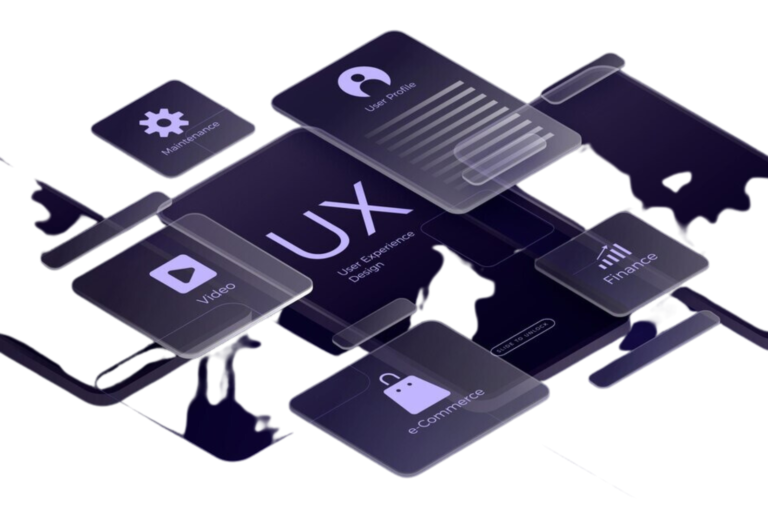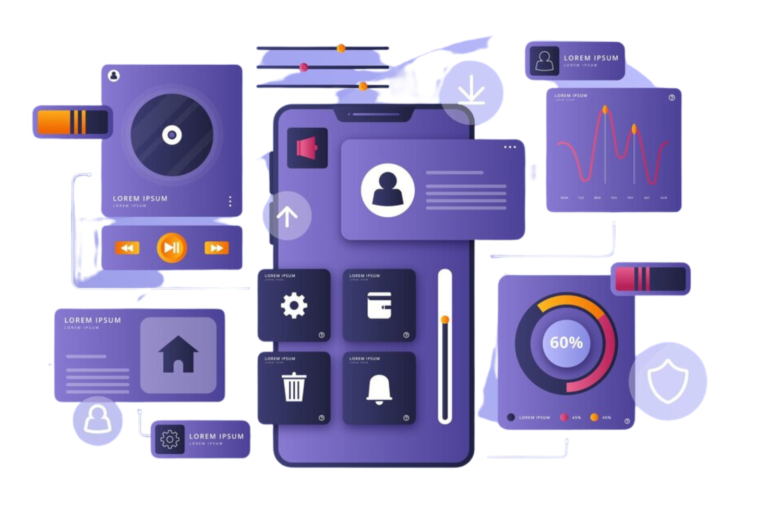A UX designer’s primary goal is for each user to have a positive interaction with a product or service. Whether the interaction solves a problem, provides entertainment, or helps the user find critical information, the experience should leave the user feeling fulfilled.
One way to think of UX design is to consider the entire process or journey a user experiences when interacting with a product or service. How is the user introduced to the service or product — through advertising, blogs, or something else? What kind of interaction does the user have with the brand? How does the user feel after the interaction? All of these questions and more are key considerations within UX design.


UI design, on the other hand, refers to the actual interfaces with which users engage. The UI design process may include buttons or widgets, text, images, sliders, and other interactive elements. UI designers ensure that every visual element, transition, and animation included within a product or service is setting the stage for a fluid, positive experience.
Content strategy isn’t always the responsibility of a UX designer, but more companies are emphasizing content-driven design to deliver a more effective experience.
Testing and prototyping are important parts of the UX design process. Most designs go through multiple iterations before they are finalized, and these changes are backed up along the way. Knowledge of common research methodologies
Typically, UX designers work with a broader design team to create products and services for an organization. This process involves planning, developing strategy, executing, and analyzing projects after implementation.
Qualitative and Quantitative Research Practices Information Architecture and Flow User Need Identification User Experience Interviewing Persona Creation Insight Synthesis
Atomic Design UI Grids and Composition Color Theory Heuristic Evaluation Typography Interaction Design and Iconography
A user experience (UX) researcher has a strong understanding of how people think and interact with their digital devices, and they bring that knowledge to their work to humanize an organization’s design thinking process. Individuals in this role are typically expected to collaborate across a variety of teams to develop a clear research plan, develop surveys and conduct interviews, and assist in overall strategy, leveraging their working knowledge of cognitive science, sociological, and psychological concepts. The user personas developed as a result of the work of UX researchers enable the design team to develop products that consumers actually enjoy using.
Once a UX researcher has completed their task of conducting the initial user analysis and delivering their insights to external stakeholders, it’s up to the UX designer to apply those insights to developing the product. This often starts with determining the product’s information architecture followed by designing wireframes and prototypes, conducting user testing, and finalizing the product. Functionality, accessibility, and enjoyability are the top concerns of any UX designer — however it’s equally important that they align user needs with the larger goals of their organization, so having a foundation of business knowledge can help aspiring UX designers achieve professional success.
While a UX designer is tasked with defining what a product should do to facilitate a positive user experience, a user interface (UI) designer is concerned with how the user will interact with the product itself. UI designers leverage psychological principles to guide product users through an app or website in a way that feels intuitive — even if the user is seemingly unaware of them. This is facilitated through strategic decisions from color and pattern choices to button placement and spacing of visual elements that elicit specific behaviors without explicit instructions. Individuals with strong design skills and experience with prototyping tools make great candidates for UI roles, however it’s just as crucial to hone soft skills like communication, collaboration, and empathy.
Content strategy focuses on the planning, creation, and execution of content which can include text, images, and multimedia elements on a page or in an application
Read MoreTesting and prototyping are important parts of the UX design process. Most designs go through multiple iterations before they are finalized, and these changes are backed up along the way
Read MoreTypically, UX designers work with a broader design team to create products and services for an organization. This process involves planning, developing strategy, executing, and analyzing projects after implementation.
Read MoreThe best UX designs are driven by research, which informs UX designers about their problems and what can be solved by a specific design. UX research can involve questionnaires, surveys, focus groups, product testing, or other research methodologies.
Read MoreThis is a demo store for testing purposes — no orders shall be fulfilled. Dismiss